Investing in IT careers was the bet Capital One made with promising results. Not only can it be a key differentiator but its a powerful tool for recruitment and retention as well.
Source: CIO – Capital One has designed several internal programs to upskill employees to fill skills gaps and to give anyone inside or outside of IT the resources to become a software engineer.
In tight talent markets, investing in employees’ careers can be a key differentiator. Upskilling and cross-training programs can not only improve employee productivity and help fill key skill gaps, but also prove to be essential tools for retention and recruitment, as Capital One’s approach to “developing the whole person” through a range of training programs attests.
Capital One has leveraged several internal professional development programs to meet the skills gap, while giving employees— and even those outside IT — the opportunity to grow their careers and expertise in tech. These programs include a full-stack development academy and an internal “tech college,” as well as opportunities to develop leadership and other soft skills.
At the center, however, is an IT culture focused on learning and the “entrepreneurial spirit,” says Mike Eason, senior vice president and CIO of enterprise data and machine learning engineering at Capital One.
A cultural commitment
Capital One has over 11,000 engineers operating across more than 2,000 agile teams. These teams run like a “small business,” says Eason.
“It keeps a big company very nimble, creates that autonomy and then drives a lot of that team dynamic and team culture down into the other groups of folks that are releasing software every day of every week to our customers and our associates,” he says.
Capital One’s strong focus on team culture helps it draw in and retain talent, Eason says, as does its commitment to upskilling and ongoing career development.
Eason attributes Capital One’s 2015 move to the public cloud as one of the biggest catalysts in attracting new engineering talent. Working on open-source projects and having an agile environment was “huge” in Capital One’s ability to “attract talent across not just the financial industry, but across all of the tech industry,” he says.
But if opportunities afforded by working with the public cloud brought new talent in, Capital One’s dedication to career development has helped motivate them to stay. The company looks beyond just the engineering hard skills of an employee to how they build relationships and influence and elevate others in the company, offering training focused on fostering leadership, public speaking, and relationship skills, among other soft skills important for anyone’s career.
This emphasis has “actually brought in a lot of senior leaders from other tech companies that wanted to be broader in some of those leadership skills and Capital One has that brand within the marketplace, not just for banks, but for the overall country. So a lot of folks have come looking for that investment in the whole person versus the engineer aspect of our talent,” Eason says.
CODA: Bringing in new talent
Still, tech training is another key component of Capital One’s recruitment and retention strategy. Capital One invests in its engineers through a variety of talent development programs, including the Capital One Developer Academy (CODA), a six-month software engineering program for full-time Capital One employees to learn full-stack development principles. It’s targeted at recent STEM graduates who may or may not have a background in software engineering but are interested in learning more on the subject.
The program has been successful in bringing in new engineering talent, with Capital One hiring around 200 people from the CODA program each year, Eason says. Graduates of this program are transitioned into Capital One’s Technology Development Program (TDP), a two-year rotational program that puts employees in separate year-long roles across two different tech departments.
…




